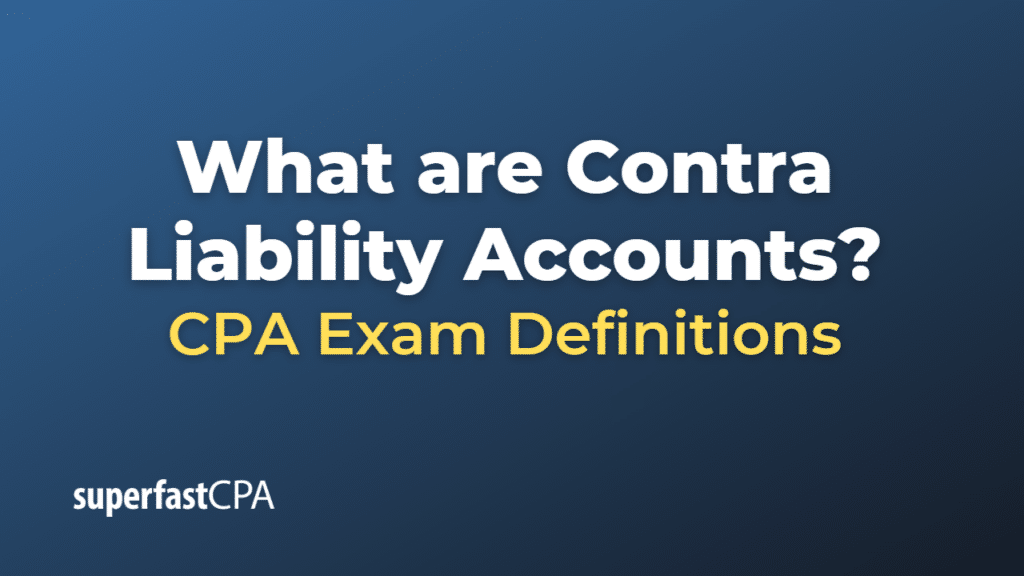Contra Liability Accounts
Contra liability accounts are a type of account in financial accounting that offset the balance of corresponding liability accounts. Contra liability accounts have a debit balance, which is the opposite of the typical credit balance found in liability accounts. The purpose of a contra liability account is to reduce the total liability shown on the balance sheet by reflecting specific adjustments, allowances, or discounts related to the liability.
One common example of a contra liability account is the Discount on Bonds Payable:
- Discount on Bonds Payable: This contra liability account represents the difference between the face value of a bond and the actual amount received by the issuer when the bond is issued at a discount. When a company issues bonds at a discount, it records the amount of the discount in the Discount on Bonds Payable account, which reduces the total bonds payable reported on the balance sheet. Since the discount on bonds payable is a contra liability account, it has a debit balance, which is the opposite of the typical credit balance found in the Bonds Payable account.
By using contra liability accounts, financial statement users can gain a more accurate and detailed understanding of the company’s liability position, allowing for better financial analysis and decision-making.
Example of Contra Liability Accounts
Let’s consider a fictional example of a company called “Green Energy Corp.” to illustrate the use of a contra liability account in financial accounting.
Green Energy Corp. decides to issue bonds to raise funds for a new project. The details of the bond issuance are as follows:
- Face value of the bonds: $1,000,000
- Coupon rate: 5%
- Maturity: 10 years
However, due to market conditions, Green Energy Corp. is only able to issue the bonds at 98% of their face value, meaning they receive $980,000 ($1,000,000 x 0.98) in proceeds from the bond issuance.
To account for the discount on the bonds payable, Green Energy Corp. will create a contra liability account called “Discount on Bonds Payable.” The bonds payable account will have a credit balance of $1,000,000, representing the face value of the bonds, and the discount on bonds payable account will have a debit balance of $20,000, representing the difference between the face value and the actual amount received.
On the balance sheet, the net liability for the bonds payable will be reported as $980,000 ($1,000,000 – $20,000), reflecting the impact of the discount on bonds payable.
In this example, the contra liability account (Discount on Bonds Payable) is used to provide a more accurate and detailed representation of the company’s liability position. By accounting for the discount on the bonds issued, Green Energy Corp. can track its actual liabilities more effectively and make more informed decisions about its financing strategies.













